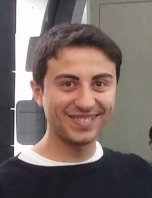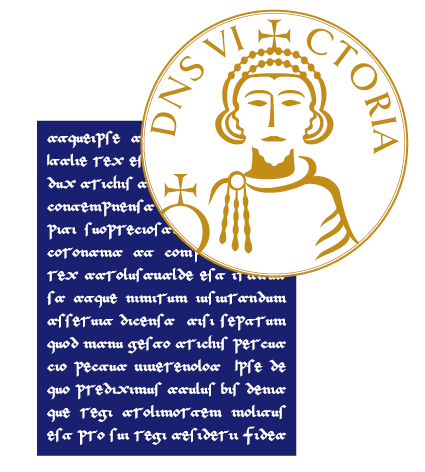Contatti

Attività curriculare
Vincenzo Paolo Loschiavo received the master’s degree in Mechanical Engineering in 2013 from the University Federico II of Napoli, Italy with a 110/110 cum laude degree. The thesis was a work on “Analysis of the effects of the scrape-off layer currents in JET tokamak plasmas”.
In May 2017 he received the doctoral degree in Information Technology and Electric Engineering, from the University of Napoli Federico II, with a thesis on the “Modelling of power exhaust in fusion plasmas”.
Concerning controlled thermonuclear fusion, he had several experiences since master’s degree time, gaining experiences and skills about engineering problems related to plasma physics. From May 2013 to July 2013, he was Visiting Engineer at the CCFE (Culham Centre for Fusion Energy, Abingdon, UK, https://ccfe.ukaea.uk/). In 2014 and 2015 he was Visiting Engineer at EFDA-CSU (European Fusion Development Agreement-Close Support Unit, Garching, Germany, https://www.euro-fusion.org/) working on the Strike point sweeping in DEMO, the Scrape-off layer and power exhaust and the Equilibrium optimization and calculations for 2nd X-point scan. From May 2015 to October 2015, he was Visiting Engineer at the ENEA (Agenzia Nazionale per le Nuove Tecnologie, l’Energia e lo Sviluppo Economico Sostenibile, Brasimone, Italy, https://www.enea.it/it/centro-ricerche-brasimone) working on the thermal fatigue analysis of the DEMO divertor target due to transient loads.
Again, from April 2016 to July 2016, he was Visiting Engineer at EFDA-CSU, working on the DEMO magnetic configurations optimization and the Transient thermo-hydraulic analysis for DEMO Plasma Facing Components. Also, in November 2015 and September 2018, he visited the Swiss Plasma Center (https://spc.epfl.ch) where he worked as Visiting Engineer on Plasma Equilibrium codes and control during the MST1 experimental campaign on the TCV tokamak facility.
From 2013 to 2017 he has been Scientific Consultant at CREATE (Consorzio di Ricerca per l’Energia e le Applicazioni Tecnologiche dell’Elettromagnetismo, Napoli, www.create.unina.it) working on several topics about plasma physics and in particular to development of plasma equilibria, vertical stability analysis, thermal and mechanical wall load analysis. In 2017 he has been awarded with a EUROfusion Engineering Grant (https://www.euro-fusion.org/target-groups/students-grantees/eurofusion-…). Therefore, from July 2017 to December 2019 he worked as a fellow of the EUROfusion Engineering Grant Programme on the “Development of an integrated electromagnetic modelling of DEMO plasma equilibria and analysis of plasma Vertical Stability and heat loads”.
Finally, since 2019 he is Research Assistant (RTD-A) at the Dipartimento di Ingegneria dell’Università degli Studi del Sannio, winner of a national competition on a project about Cultural Heritage Technologies (Kinetic Energy Harvesting by Magnetostrictive Materials) under the supervision of Prof. D. Davino (SSD ING-IND/31). In Unisannio he is a regular lecturer of “Elettrotecnica” course for three years degree in Energy Engineering. He has been co-supervisor of several bachelor’s and master’s degree thesis over the years. In 2021 he has been, together with Prof. D. Davino, scientific responsible in a collaboration agreement, involving activities on controlled thermonuclear fusion, between CREATE Consortium and Università degli Studi del Sannio.
As a summary, his scientific interests include plasma engineering, computational electromagnetics, optimization and thermo-mechanical analyses in tokamaks, energy harvesting, magnet design.
He is co-author of more than 30 scientific publications on international journals and conference proceedings and he is referee for several journals (among them Fusion Engineering and Design, Nuclear Fusion and MDPI’s journals). He is also member of the Editorial Board for the International Journal of Applied Electromagnetics and Mechanics (IJAEM, ISSN print 1383-5416, ISSN online 1875-8800) and guest editor of a Special Issue “Latest Theoretical, Technological, and Experimental Advances in Fusion Devices” for the Journal Energies/MDPI (ISSN 1996-1073).
He served as Organizer and Chair of a Special Session for the 2021 IEEE International Conference on Environment and Electrical Engineering (7-10 September 2021, Bari, Italy).
Networking
Because of his experiences abroad, he has stable collaborations with several Italian and international institutions. Among them: ENEA and CREATE (Italy), EFDA-CSU (Germany), CCFE (UK), CERN and EPFL (Switzerland).
Research Projects
Since 2014 he has been actively collaborating with the Program Management Unit (PMU), within the European research consortium on nuclear fusion EURATOM/EUROfusion, at the Power Plant Physics and Technology department (PPPT, Max Planck Institute in Garching, Germany). He gave his contribution to the international project dedicated to the DEMO fusion reactor through electromagnetic simulations of plasma scenarios (for standard and alternative configurations) and by optimizing the geometry of the machine and the positioning of the current actuators (poloidal field coils) in order to improve the passive and active stability of the plasma. He also dealt with the assessment of the advantages of the alternative strike-point sweeping technique, aimed at reducing the thermal load impinging on the plasma facing components, simulating the dynamic evolution of the plasma and analyzing the behavior of the first-wall materials from the thermo-hydraulic and mechanical point of view.
In 2015 and 2018 he was part of the MST1 Task Force of the European Consortium for the Development of Fusion Energy (EUROfusion) which carries out experiments on the so-called Medium Size Tokamaks, actively participating in the experimental campaigns at the TCV machine (Lausanne, Switzerland) for the design and realization of a double-decker plasma alternative magnetic configuration.
Since 2017 he has been collaborating with the DTT Team on the design of the Italian DTT facility (Divertor Tokamak Test). In this project he participated in the electromagnetic modeling of plasma scenarios, in the design and optimization of poloidal field coils to allow alternative plasma configurations, in the design and thermo-hydraulic analysis of cooling circuits for in-vessel coils and for the ICRH (Ion Cyclotron Resonance Heating) antenna.
Since 2018 he is part of the international collaboration SHiP (Search for Hidden Particles) with CERN, actively working on the project for the design of a large magnet of the scattering and neutrino detector for the SHiP experiment.
Bibliometric indicators
Scopus: more than 1100 citations, h-index 21; (https://www.scopus.com/authid/detail.uri?authorId=55904760700)
Google Scholar: more than 1800 citations, h-index 22 (https://scholar.google.it/citations?user=frSpXa-kFbYC&hl=en&oi=ao)
ORCID: https://orcid.org/0000-0001-5757-8274
WoS: 451 documents, 9071 citations, h-index 46, https://publons.com/researcher/3695683/vincenzo-paolo-loschiavo/
(Please note that the last h-index on WoS is mainly due to the international collaborations in the fusion field)
List of oral and poster presentations in international established conferences or research international institutions:
- Oral presentation: International Conference on Optimization and Decision Science, Sorrento, Italy, September 4th-7th 2017, “Optimization of the PF coil system in axisymmetric fusion devices”, R. Albanese, A. Castaldo, V.P. Loschiavo, R. Ambrosino.
- Oral presentation: 2nd International Conference Florence Heri-Tech: The Future of Heritage Science and Technologies, HERITECH 2020, “Magnetostrictive materials and energy harvesting for structural health monitoring applications”, C. S. Clemente, D. Davino, V. P. Loschiavo
- Oral presentation: 2nd International Conference Florence Heri-Tech: The Future of Heritage Science and Technologies, HERITECH 2020, “Energy balance of a continuous structural health monitoring system based on energy harvesting”, C. S. Clemente, D. Davino, V. P. Loschiavo
- Poster presentation: 45th European Physical Society Conference on Plasma Physics, Prague, 2nd-6th July 2018, “Vertical stability margin studies on TCV: experiments and modelling”, F. Villone, R. Ambrosino, V.P. Loschiavo, S. Coda, TCV and EUROFusion MST1* teams.
- Poster presentation: 30th edition of the Symposium on Fusion Technology (SOFT 2018), Giardini Naxos (Messina, Sicily), 16th-21st September 2018, “Electromagnetic analyses of Single and Double Null configurations in DEMO
device”, R. Albanese, R. Ambrosino, C. Bachmann, A. Castaldo, G. Federici, V.P. Loschiavo, M. Mattei, F. Maviglia, F. Villone
Awards about scientific research:
- 2017: EUROfusion Engineering Grant (2017-2020). He worked on the “Development of an integrated electromagnetic modelling of DEMO plasma equilibria and analysis of plasma Vertical Stability and heat loads”. The research topics focused on plasma electromagnetic modeling and control and on the evaluation of the heat load impinging on the first wall of DEMO reactor.
- 2013 scholarship funded by the Scientific Office of the Italian Embassy in London for an internship at the EFDA-JET nuclear fusion laboratory, based at the Culham Centre for Fusion Energy (CCFE), UK. He worked on the “Analysis of the effects of the “scrape-off layer” currents in JET tokamak plasmas”.
